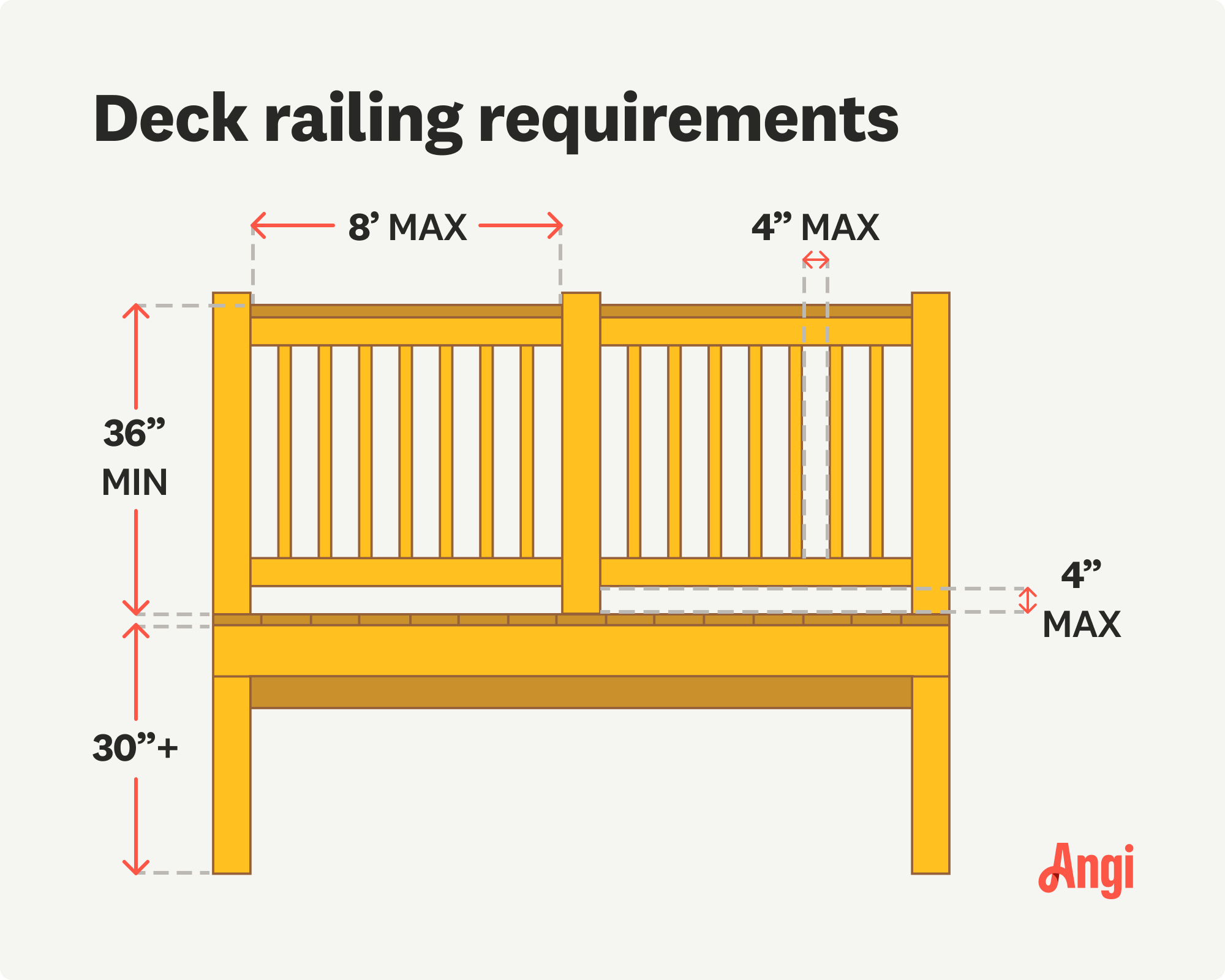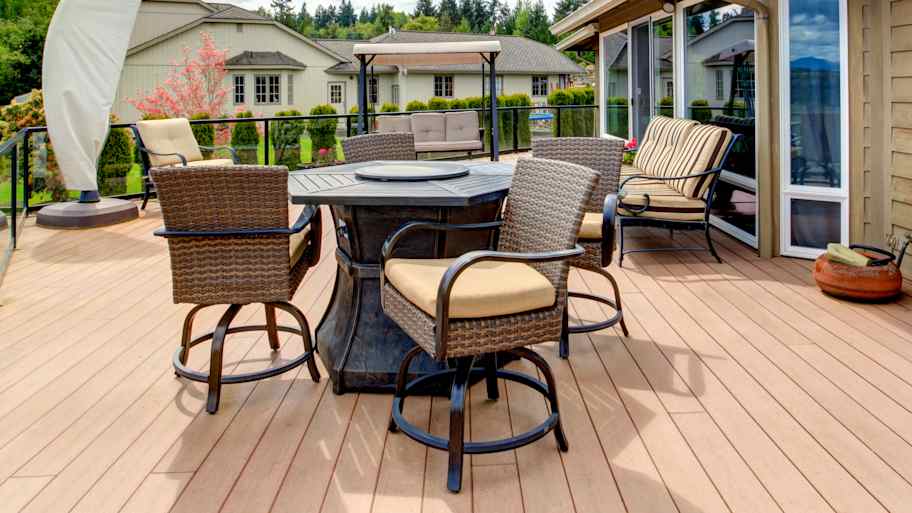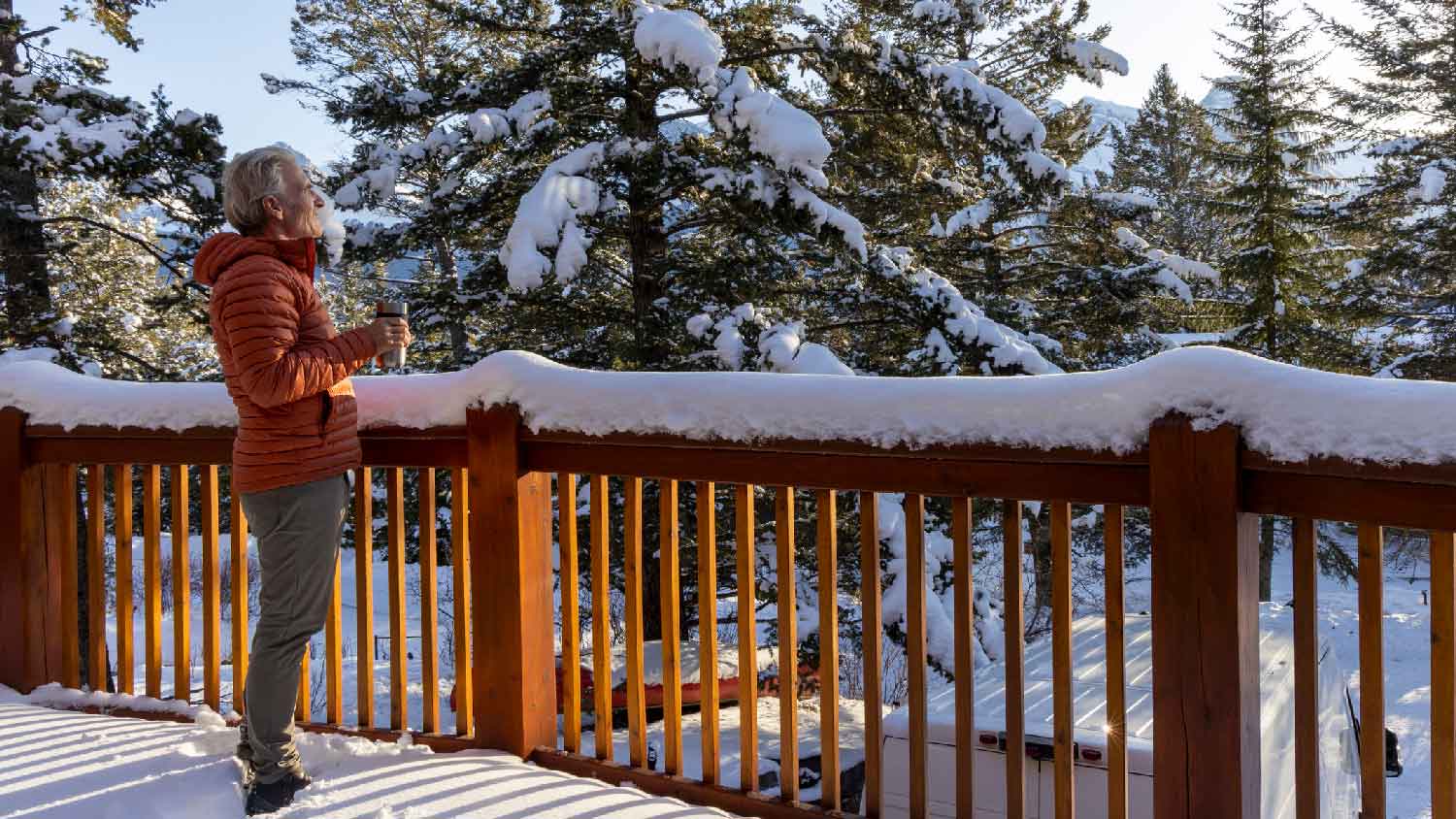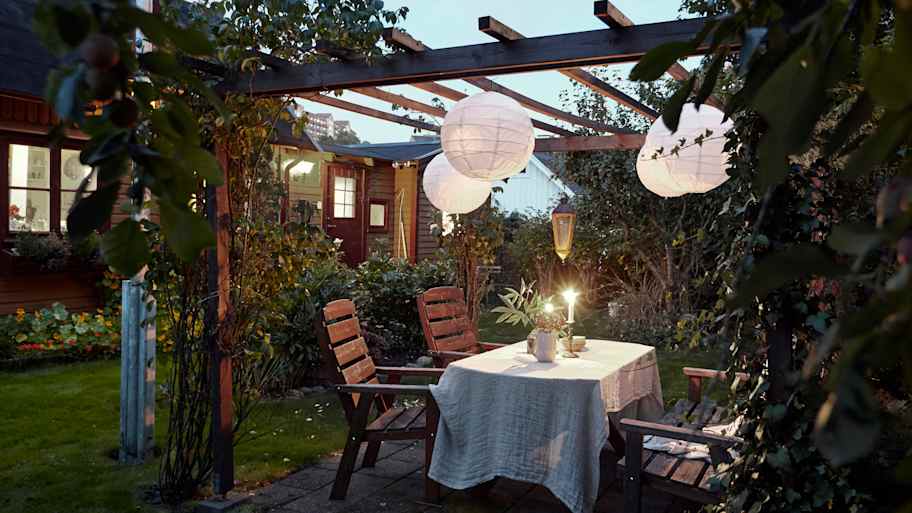Pros
The primary purpose of deck railings is to keep people safe. Railings prevent accidental falls, making your deck a secure space for family and guests, especially children and pets. The good news is that deck railings can enhance the visual appeal of your deck, and installing deck railings can increase the value of your home. Potential buyers see railings as an added safety feature, making your property more attractive.
There are many types of deck railings in a variety of materials and designs. This allows you to choose a style that complements your home's architecture and your personal taste.
Cons
One of the downsides of installing deck railings is the additional cost on your deck budget. Materials, labor, and maintenance can add to your overall project expenses. Additionally, depending on the design, deck railings can obstruct your view from patio doors and windows. This is a drawback if you have a scenic view you'd like to enjoy.
Types of Deck Railings
Now that you understand the importance of deck railings and the code requirements for this part of your deck, let's explore the different types of deck railings. Each type has its own benefits that can make your deck a comfortable and aesthetic outdoor living space.
Wood Railings
Wood is a classic choice for railings, and it adds a timeless and traditional look to your deck. Wood railings are versatile and can be customized to match your deck's aesthetic, but they require more maintenance over time to protect against rot and decay.
Cable Railings
Cable railings cost a bit more, but they provide a modern and minimalist appearance. They are often made of stainless steel, and they won’t fully obstruct your view, making them an excellent choice for decks with scenic surroundings. Cable railings are durable and low-maintenance.
Glass Railings
Clear glass railings offer an elegant and sophisticated look. They provide an almost completely unobstructed view of your surroundings and allow more natural light to filter through to your deck. Glass railings can be a bit more expensive but are worth considering for their aesthetic appeal.
Aluminum Railings
Known for their durability and resistance to corrosion, aluminum railings are both sturdy and affordable. They come in various styles and colors, making them a versatile choice for different deck designs.
Plexiglass Railings
A budget-friendly alternative to glass, plexiglass railings offer similar transparency and are less prone to shattering. They can be a great compromise between aesthetics and cost and are an even better option than glass in regions that are prone to harsh weather.

 - Derek Rose.png?impolicy=thumbnail)















